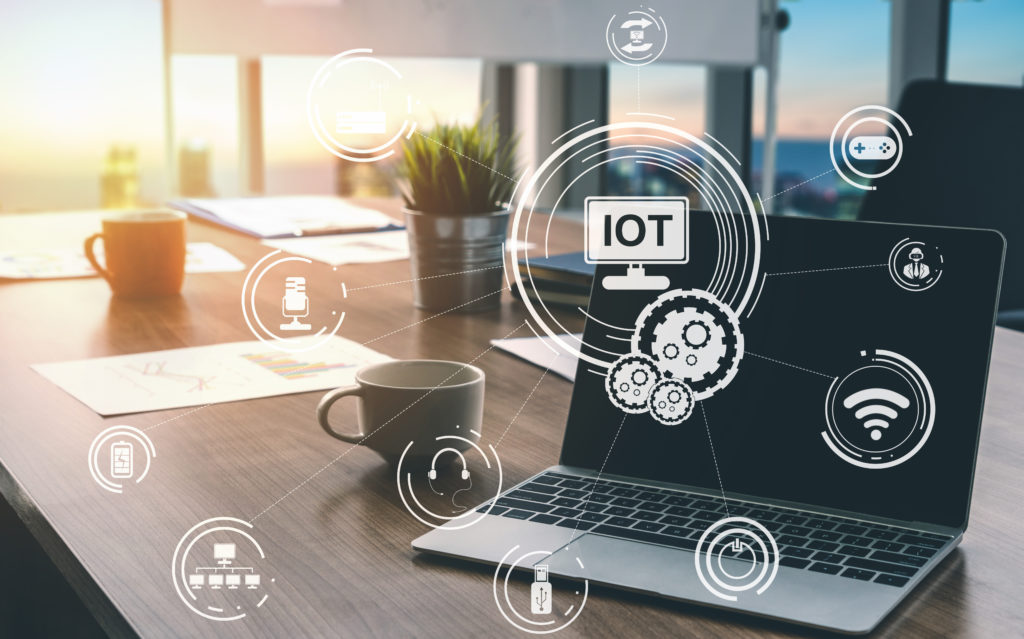The issue of rising energy costs continues to dominate headlines in the UK, and with prices anticipated to increase significantly for everyone, businesses need to take the opportunity to explore new methods to optimise energy use.
IoT sensor technology is one of the most cost-effective methods of achieving this, allowing for accurate monitoring that can inform the optimisation of energy use and reduction of waste.
How can IoT technology assist in monitoring energy use?
Innovative IoT sensor technology provides new opportunities for businesses to effectively monitor energy use – an essential step in cost reduction. Small, easy-to-use sensors can be placed in a variety of areas to detect temperature, touch, proximity, humidity and water. The collected data can then be transmitted in real-time, integrating into existing data systems to be analysed, giving businesses a complete overview of their energy use and waste.
Temperature and proximity sensors are particularly useful for energy monitoring. Temperature sensors provide more accurate monitoring of workplace environments, whether in office, retail, or warehouse spaces, identifying areas of overheating or heat loss (for example, through inadequate insulation). The use of proximity (or motion-activated) sensors also provide data on which areas or rooms are in infrequent use, determining where energy may be going to waste in lighting or heating.
Smart sensors can be as small as 19mm x 19mm x 2.5mm, making it easy to install them almost anywhere, to detect the most granular data possible to help solve or prevent many issues. With this information, businesses can optimise their energy use, services and processes. . The overall flexibility of sensor use ensures that the data collected is specifically tailored to the needs of each business and its occupants.
How can this information fuel energy optimisation?
There are various applications of sensor data in energy optimisation, which can apply to a wide range of businesses and industries.
Temperature sensors are ideal for locating where heat is lost within a physical space through factors such as ineffective insulation, particularly surrounding doors and windows. Where unnecessary heat loss is identified, insulation can be repaired or replaced, resulting in less energy waste, or energy-conserving windows installed. On the other hand, if certain areas are overheated or have humidity issues, the temperature setting for that space can be reduced to provide a consistently appropriate work environment, whatever the context.
PIR sensors can be installed to monitor space use, rooms or areas that are infrequently used can be equipped with either motion-activated lighting and/or heating, or they can be left with the lights and heating switched off for the periods in which they are not in use. This ensures that energy is not wasted through the maintenance of unused space.
Businesses also benefit from increased sustainability through the application of IoT sensors. Energy waste not only impacts business costs but also contributes to a business’s carbon footprint. Lowering energy waste contributes towards vital sustainability targets.
What are the additional benefits of smart sensor monitoring?
There are numerous additional benefits to the installation of smart sensors. One key advantage lies in the monitoring and improvement of health and safety compliance. Especially in the wake of the Covid-19 pandemic, there has been an increased emphasis on factors such as air quality in workspaces which can in turn boost the productivity and wellbeing of the workforce. IoT sensors can now not only provide humidity, temperature, proximity, water, and touch-based data but also monitor CO2 levels.
From offering a solution to help businesses navigate this difficult period in the UK, to the multitude of benefits for the wellbeing of a company workforce: IoT sensor technology is becoming more affordable, accessible and easier to scale – making it something every business should be considering investing in for 2022.
– Bengt Johannes Lundberg, CEO, Disruptive Technologies –
